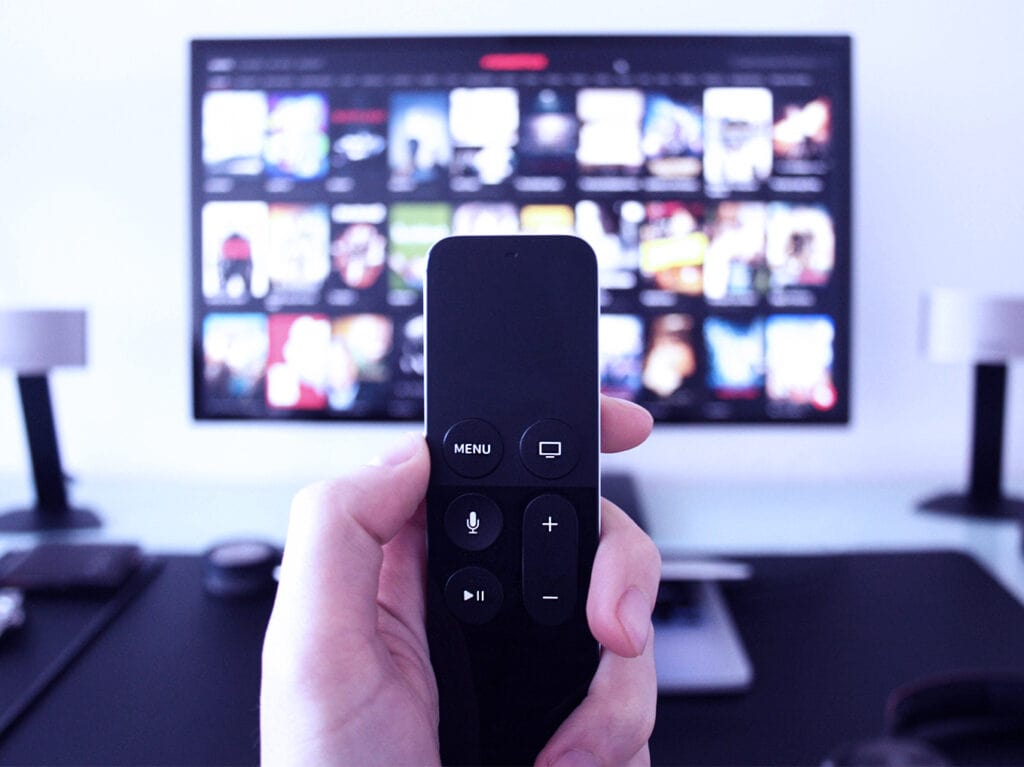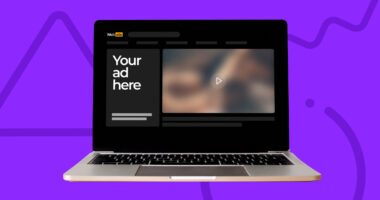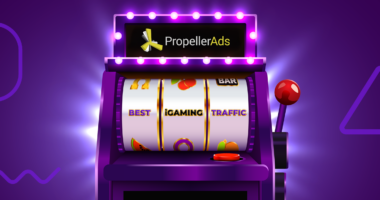Introduction
Programmatic advertising debuted around the year 1994 – almost 30 years ago! The first ad that appeared on the internet, a display ad, was a huge success. Users were clicking on the banner because the new concept was fascinating for them.
The idea of online native advertising followed, appearing a couple of years later. Even though people knew the concept of native advertising from the beginning of the XX century, the term “native advertising” was used for the first time in 2011.
As you can see, programmatic advertising is something relatively new. Banner ads were a huge success when they appeared. They are still doing well, but they are not as effective as they once were. Things that have been around for a while start to bore us, and we shift attention to new stuff that we haven’t seen before. And this is why companies and advertisers are trying to come up with new, fresh types of advertising that will intrigue users and convert them.
You might be wondering at this point: “Is programmatic advertising the future of marketing?” Let’s discuss the programmatic advertising forecast to help you answer this question and stay updated!
1. 5G Boosting Programmatic Industry
5G stands for 5th generation of mobile networks and is even 20 times faster than LTE (Long-Term Evolution). The speed could achieve as much as 20 GB per second! What does this mean for programmatic ad serving? Hyper-speed real-time bidding.
Some advantages & challenges for programmatic:
- Delays eliminated – 5G means faster loading and shorter wait times for the website to fully appear with good quality.
- Better ad viewability – In the world of programmatic technologies supported by 5G, websites load faster and ad viewability increases. Why? According to HubSpot research, the reason behind people installing ad blockers 36% of the time is to speed up page loading. However, introducing 5G means that the time needed to load the content of the webpage will be shorter, so fewer people may decide to use ad blocking software. So, this will bring up the ad viewability.
- Higher ad resolution – Faster load time will likely result in higher quality user experience and page and ad views should increase. Consequently, internet users will expect better quality and higher resolution, both from websites and ads, challenging advertisers since they will need to provide even better quality than before.
2. Voice-Activated Ads

Many companies have come out with their voice-activated virtual assistants that are available while using smartphones, computers and separately sold smart speakers. Voice assistants will answer your questions and help you with everyday tasks. Activation by voice means that now you can search through the internet both when you’re holding your phone and also when your hands are busy.
Voice assistants can result in a higher number of searches and significant transformations in the advertising world. More searches can also guarantee more personalized ads, increasing the number of clicks and conversions.
3. Contextual Targeting and First-Party Data in the Post-Cookie World

Our browsers store cookies, which are small text files. The website you are browsing creates first-party cookies (e.g. it remembers what you’ve left in your shopping cart).
Third-party cookies are small blocks of data that belong to other companies (mainly from the programmatic ad tech industry). Usually they belong to the partners of a website you are visiting. A specific code, script or tag drops a third party cookie, which works as an identifier and connector. Cookies label the visitors – and thanks to that, advertisers can later retarget that person online and serve them a personalized ad.
Simply speaking, third-party cookies are very important and eliminating them would have visible consequences for the programmatic future. Unfortunately, the death of these cookies flickers on the horizon.
In February 2020 Google announced that they will stop using third-party cookies. Initially, everybody thought that the phase-out would happen sooner. Now rumor has it that they’ve postponed it from 2022 to 2023. This means that these cookies will probably disappear by the end of next year.
We owe many advertising opportunities to third party cookies: targeting, frequency capping, measurement, and attribution. Something needs to fill that gap.
Here first-party data can step in, and bring advertisers a huge amount of very valuable data, starting from browsing behavior and users’ preferences. They carry many other possibilities.
According to Digiday, this is how advertisers can use first-party data:
- Broadening the user data set
- Registration walls
- Audience segmentation and contextual targeting
According to their data, 51% of marketing professionals have already started investing more in contextual targeting. At the same time, 43% of advertisers are optimistic about using this method in the future.
We need to remember that contextual targeting isn’t exactly new, but as third-party cookies are slowly becoming a thing of the past, we’re going to start seeing more and more innovation in this matter. The upcoming changes will have a significant influence on online advertising which forces marketers to explore new ways of delivering ads while staying compliant to user’ privacy regulations.
And with contextual advertising predicted to reach $335 B by 2026 the incentive is already there. The best part is, ad softwares like Voluum are already prepared for this industry-transformation: read about our cookieless tracking solutions here.
4. In-Game and Audio Advertising

The gaming industry is at an all time high. The industry’s global revenue is already reached the $300B mark exceeding all expectations for 2022. Console games as well as PC are expected to grow. This means there’s never been a better time to get into it.
So as the industry evolves, new ways to monetize start appearing. And one of these ways is through programmatic advertising! In-game ads bring advertisers many possibilities, for example, retargeting can boost the ROI.
Most probably, streaming and multiplayer mobile gaming will also benefit from 5G. The introduction of 5G will also stimulate the effectiveness of in-game ads. With 5G, internet users can stop worrying about their data caps. Mobile carriers will probably need to significantly change their calculations in this regard.
As for advertisers and publishers, in-game ads are still a relatively new segment. This means that new metrics and pricing is yet to be set by the programmatic advertising market.
It looks like we statistically spend even twice as much time listening to music or podcasts than in gaming applications on our mobile devices. This makes sense, right? When you’re playing a game, you really cannot do anything else with your hands. But you can listen to music while you’re working, cleaning and doing many other things, right? And this brings opportunities to advertisers!
Audio advertising refers to ads placed on music streaming services (e.g. Spotify, Apple Music), podcasts, and digital radios. It is relatively new, much like in-game advertising. It is generally brand-safe and ad-blocker resistant. Not only that, but also it turns out that podcasts are one of the most converting traffic sources.
especially because of high levels of consumer concentration. The results are astonishing, as they are more successful than social media posts.
5. OTT and CTV Ads – New Programmatic Advertising Channels

In the recent years, we’ve been noticing the increasing expansion of OTT (Over The Top) and CTV (Connected TV) ad segment.
The first acronym refers to all streaming services accessible on the internet, while the latter refers to all televisions sets that are able to stream movies and videos over the internet.
Currently, there are approximately 200 million CTV users. We’ve been able to access many streaming platforms for quite a few years already, such as Netflix, Hulu, and Amazon Prime, to name only a few. In the 4th quarter of 2019, Disney launched its own streaming service Disney Plus which was a huge step into the OTT market and a booster for it. At the same time, it shows that traditional TV is slightly outdated.
All these platforms have increasing viewership, and have the potential to capitalize on it using programmatic ad placement called OTT advertisements. The PwC estimated that programmatic TV advertising will represent one-third of the global TV ad revenue in 2022.
6. Omnichannel Advertising
As we mentioned before, the amount of time that people spend on their phones is not decreasing. Moreover, electronics companies keep putting new models of devices on the market. Nowadays, you can have a tablet, smartphone, smartwatch just to name a few.
The industry is racing to come up with something new, and grab people’s attention. In the world of multichannel advertising, cookies are an outdated technology because people use many devices as well as different browsers on one device.
Omnichannel advertising successfully reaches all mentioned devices. Programmatic adtech makes it possible to customize ads to suit different devices.
But what exactly is omnichannel advertising, and how is it different from multichannel advertising?
Both concepts are based on engaging users across multiple platforms – but they are not interchangeable. While multichannel focuses on a specific channel and the way users complete the transactions there, omnichannel takes into consideration that users may reach many channels. It tries to give users the best experience, where each interaction is supposed to maximize the probability of conversion.
By following users through multiple channels, advertisers gain more information about their preferences, behavior. Consequently, they can track and predict consumers’ behavior more precisely, and maximize the number of conversions. Feeling encouraged to try it yet?
7. Popular Verticals

Studies show that screen time is not decreasing at all, which gives advertisers and publishers a chance to come up with new innovation opportunities, ad formats, and audiences in a world ruled by the internet.
This carries many programmatic opportunities to test different categories of ads. Types of ads that were not very popular till now may turn out to be very profitable. So maybe it’s worth considering trying something new? Let’s think it through.
We’ve already come to the conclusion that people get bored easily of the things they’ve seen many times. Think about you scrolling through a website and seeing the same creative or banner a few times. In the best case: you click on it once and never click on it again because you already know what’s hiding behind it. In the worst case scenario, seeing the same content over and over again extremely annoys you.
The same can happen with certain categories of products and services. So you need to keep your finger on the pulse. The worst thing you can do is to keep showing the same offer until it slowly dies. You should try offers from different categories to know which one has just started gaining people’s interest.
Categories related to dietary supplements have been popular and successful for quite a long time. But unfortunately – or fortunately – other categories take their place!
We’ve noticed that advertisers are switching to e-commerce offers promoting, for example, electronic gadgets, clothing, jewelry, but also business related categories, mobile applications, etc. The legitimate verticals are getting hot now as advertisers want to avoid all possible problems with the campaign’s approval process. And we are not surprised at all!
Predictions say that revenue from retail media can even reach $50 billion globally! Read through our comprehensive list of trending verticals for the 2020s.
And finally, the metaverse – a world of hybrid digital and physical experiences, is coming to life. Facebook and Epic Games already work on them. Although, even now it seems quite futuristic. Interactive video ads will accelerate the rise of shoppable experiences everywhere.
“Metaverse” buzz is going to stimulate advertisers to spend money. This new channel will bring new formats, placements and new even younger audiences.
The bright future of advertising.
Programmatic advertising is constantly evolving and a lot of its potential is yet to be discovered.
This is why it is so important to follow the newest programmatic buying trends. Implement new tactics and concepts while advertising your products and services on the internet.
The most significant thing that you need to always remember, while staying in the online advertising business but also any other business, is that you cannot let yourself stagnate. You need to keep your finger on the pulse and test new things continuously!
So get ready! Get your offers and creatives, and get ready to test them to become one of the most accomplished in the field of online advertising! Of course, with the support of the industry-leading ad tracker!




